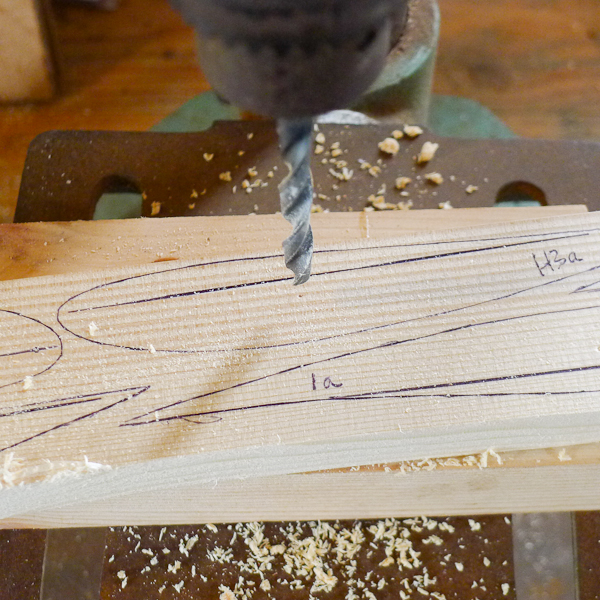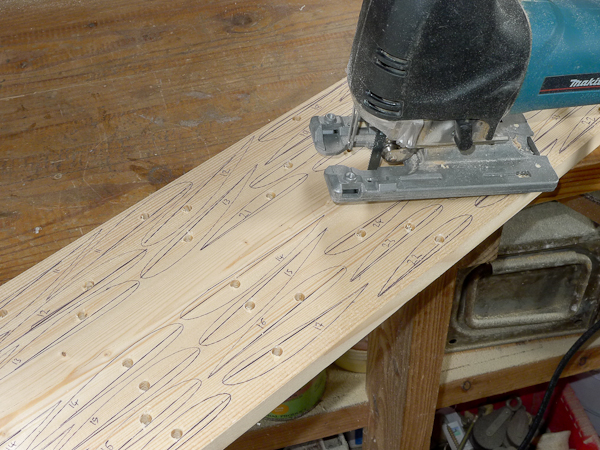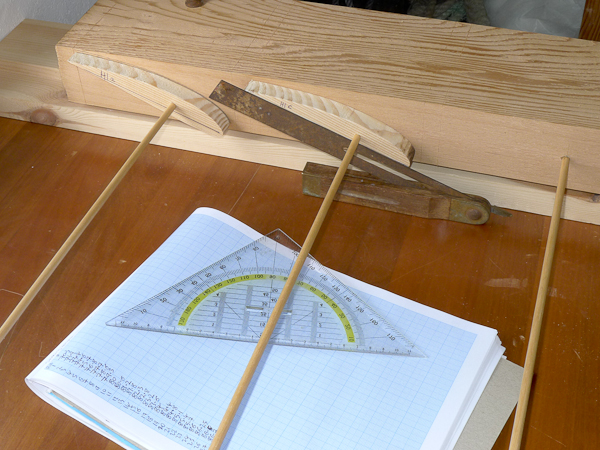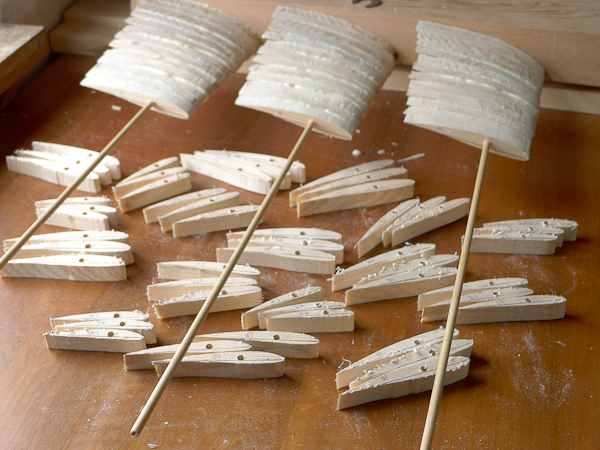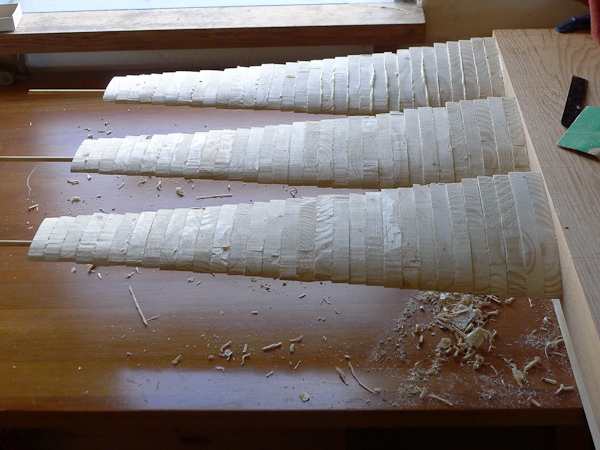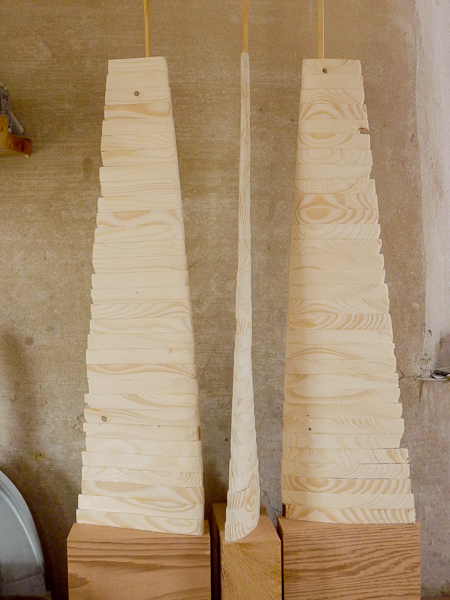Blades
O.k., here’s an update on my blade construction.
The carved wooden blades commonly used in home-built windpower projects are easily made and durable. They have one major draw-back though and that is that they are an approximation of an aerodynamically accurate blade. A good enough approximation, they work. But, and it’s a big BUT as far as I’m concerned, they have a relatively low stall angle. People seem to be going to great expense adding big resistors to their circuits etc. to control stall, why not just avoid it with a carefully made blade?
I have found the website Airfoil Investigation Database of immense use. (I must make a donation!)
If you look up flat airfoil sections and compare them to more complex but standard sections it can be seen that you can gain a few degrees of stall angle by carefully selecting a good airfoil section. Making a blade from these sections by hand isn’t so easy though.
I used the website’s template generator to draw blade sections starting with the Wortmann FX 60-126 at the root, interpolated along the blade and ending with the Clark-Y 11.7% Smoothed at the tip. I did this just for the pure hell of it as much as any other reason. The possibilities are endless, just go and play with the website! I printed the profiles on card, cut them out and traced around them onto the wood, marking the centre of the thickest part and the chord-line for setting the angle.
I calculated the angles with a spreadsheet and Hugh Piggott’s and Claus Nybroe’s formulas. The angle of attack for these sections is slightly different and this was included in the spreadsheet but I really think I was splitting hairs at that stage.
When I started making the blades I thought sure, this is fine for an experiment on a small (700mm) blade but totally impractical for a big blade. By the time I’d finished and saw my turbine spinning quietly I thought I’d tackle it again for the next bigger project. Doing anything the first time, particularly reinventing the wheel, is always slow and I’ve worked out how to speed up the process, get it more accurate and stronger.
The blades didn’t feel rigid enough so I coated them in glass-tissue and West Epoxy which I’d rather avoid. If I did it again I’d use a carbonfibre rod for the centre and woven carbonfibre or glass cloth for the skin. I’d never done any glass resin work before and I made a bit of a mess of it.
Here are the pictures of the process… they explain it better than words but contact me if you can’t follow it. One other point is that although I really only made a wooden core for a fibreglass/resin blade, it used a fraction of the timber required compared to carving a blade and also used easily available timber.
I might do it again but I’ve got another technique I want to try… more of a hybrid of this and Hugh’s technique of carving which might result in a more accurate blade and no fibreglass coating.

